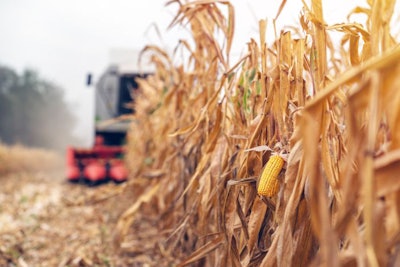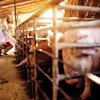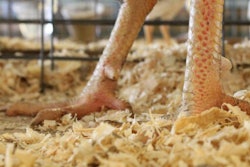
Farmers across grain-growing regions of the US saw challenging growing and harvest conditions in 2019
Difficult weather conditions during the 2019 U.S. growing and harvest season resulted in widespread mycotoxin contamination in grains, according to Neogen’s 2019 Capstone Report.
At the beginning of the planting season in April, wet weather prevalent with wet soil conditions at planting time. North Dakota, South Dakota, Minnesota, Michigan and Pennsylvania had zero acres planted in April.
“This set the stage for late, immature crops at risk for frost,” Neogen said.
May was second wettest on record and also saw the record slowest planting of corn since 1995. By the end of May, only 58% of corn acres were planted, compared with the five-year average of 90%.
“Delays across the grain-producing region set the stage for uneven planting and quality risks that were to come later in the season,” the report said.
Soil moisture levels moderated somewhat in June, but were still above average. In the Western and Southeastern U.S., very dry conditions occurred when pollination of corn was beginning.
“This was prime time for aflatoxin growth from Aspergillus molds,” Neogen said.
Significant rains fell across the Great Plains and Upper Midwest in July, while drought conditions in July were more prevalent from Alabama to the Carolinas. By the end of July, only 58% of corn was silking, well behind the five-year average of 83%.
“Early wet soil conditions for corn left shallow root systems that weakened corn plant standability and growth prospects,” the report said. “This affected corn quality and yield for many impacted producers.”
August weather was extremely varied across the country. Michigan, Indiana, Ohio and North Carolina saw corn with poor to very poor ratings above 20%.
In September, above-normal temperatures and little rainfall across the Southeast raised the risk for aflatoxin and fumonisin growth. The Northern Plains were hit with heavy rains that threatened small grains and immature corn in fields. By September 22, only 29% of the corn was mature – the slowest pace since 2009. Corn harvest barely reached 7% by the same date, compared with the five-year average of 11%.
“The late frost risk for immature corn was the worst in recent years. As fall weather approached, many corn acres were unable to fully develop, and low test weight and damage from weather stress appeared,” Neogen said.
Dwindling heat units meant wet corn in the field was unable to dry, causing serious harvest threats.
“A wet corn crop at harvest is difficult to dry properly, and costs per bushel are significant,” it said. “Late in the fall, delays for propane left corn in the field far too long, worsening quality and shortening storage time.”
Multiple mycotoxin reports across various crops
These conditions led to mycotoxin reports from various crops in many states, Neogen said. Reports include:
- Deoxynivalenol (DON) in barley from New York and Ohio.
- DON in winter wheat from Nebraska, Kansas, Minnesota, Missouri, Illinois, Indiana, Michigan, Ohio, Kentucky, New York, Pennsylvania, Virginia and North Carolina.
- DON in wheat middlings from Alabama.
- DON in spring wheat from North Dakota.
- Ochratoxin in oats from Minnesota.
- Aflatoxin in corn from Nebraska, Kansas, Oklahoma, Texas, Minnesota, Illinois, North Carolina, South Carolina, Georgia and Florida.
- Fumonisin in corn from Nebraska, Texas, Minnesota, Missouri, Illinois and North Carolina.
- DON in corn from Nebraska, Iowa, Illinois, Michigan, Indiana, Ohio, Mississippi, North Carolina, Pennsylvania and New York.
- DON in corn silage from Nebraska, Ohio and New York.
- DON in dried distillers grains with solubles (DDGS) from Nebraska.
- Zearalanone (ZEA) in corn from Nebraska, Minnesota, Iowa and New York.
- ZEA in corn silage from South Dakota and New York.
- ZEA in corn gluten meal from Nebraska.
- ZEA in corn germ and DDGS from Illinois.
- ZEA in brown rice, rice bran and rough rice from Texas.
- T-2/HT-2 toxin in corn and DDGS from Minnesota.










